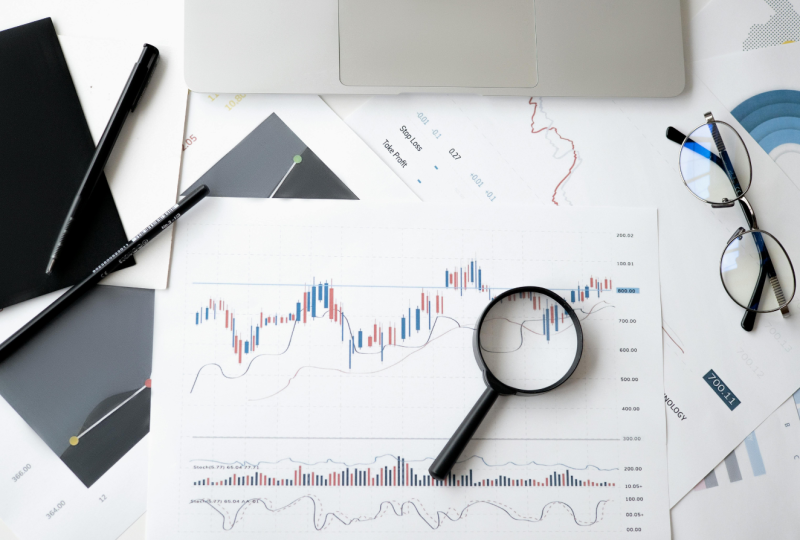Why High Liquidity in Forex is Important For Scalpers
May 16, 2025

Scalping in Forex is all about speed, precision and timing—and nothing supports that better than high liquidity. Without it, trades get delayed, slippage increases and profits shrink. For scalpers who make dozens or even hundreds of trades a day, this can kill any edge. High liquidity means tighter spreads, faster execution and less risk of getting stuck in a trade.
According to the Bank for International Settlements, over $7.5 trillion is traded in Forex daily—scalpers thrive in the most liquid pairs like EUR/USD and USD/JPY, where big banks and institutions are always buying and selling. If you’re serious about scalping, liquidity isn’t just helpful—it’s non-negotiable.
Scalping Needs Fast Execution and Liquidity Makes That Happen
Scalpers aim to profit from small price movements, often just a few pips. To do that consistently, they need orders filled instantly. High liquidity ensures there’s always a buyer when you’re selling and a seller when you’re buying. This prevents delays.
For example, in the EUR/USD pair, which has the highest liquidity in Forex, a scalper can enter and exit a position in under a second with minimal slippage. Compare that to an exotic pair like USD/TRY. Low liquidity means you might sit in a trade longer than intended, or worse—exit at a much worse price due to a lack of counterparties.
Go ECN for True Liquidity
Not all brokers offer true market liquidity. Market makers often rely on internal pricing, leading to delays, wider spreads and potential conflicts of interest. In contrast, ECN (Electronic Communication Network) and STP (Straight Through Processing) brokers connect you directly to banks and liquidity providers for faster execution and better pricing.
If you’re scalping or trading frequently, an ECN/STP broker is essential. Look for:
- Real-time market depth
- No dealing desk intervention
- Ultra-low latency execution
The right broker gives you tighter spreads, faster trades and direct access to real market liquidity.
Tip: Use Zero Spread Forex Broker with High Liquidity
To further enhance performance, consider using a zero-spread forex broker with high liquidity and see here for a list of top-rated zero-spread forex brokers with deep liquidity. These brokers offer raw pricing, eliminating spread costs, which is ideal for scalping. Zero-spread trading with deep liquidity pools ensures faster execution, better control over entry/exit points and improved risk management.
Tighter Spreads Mean Lower Costs Per Trade
Every time you open a trade, you’re paying the spread—the difference between the bid and ask price. In high-liquidity pairs, this spread is razor-thin. That’s a major win for scalpers, who execute dozens of trades daily.
Take this: the average spread for EUR/USD is often 0.1 to 0.3 pips with a good ECN broker. But in lower-liquidity pairs like GBP/NZD, spreads can spike to 4-6 pips. That’s an extra cost of up to 60 times per trade.
For a scalper targeting just 5 pips of profit per trade, paying 6 pips in spread instantly kills the trade. You’d be operating at a net loss. Liquidity protects your edge by keeping trading costs low and consistent.
Slippage Is a Scalper’s Worst Enemy
Slippage happens when your trade is executed at a different price than expected. In fast-moving markets or low-liquidity pairs, slippage can eat up your potential gains or increase your losses.
Imagine placing a buy order at 1.1000, but due to low liquidity, it gets filled at 1.1006. That’s 6 pips lost instantly and if your target was just 5 pips, you’re now already in the red.
High liquidity reduces the risk of slippage because there are enough buy and sell orders in the market to fill your trades quickly at the expected price. This consistency is essential in scalping, where every pip matters.
Depth of Market Is Why Big Volume Needs Big Liquidity
Scalpers often scale their volume when they find a winning streak. But higher volume trades need more market depth—more buy/sell orders at different price levels. High liquidity ensures there’s enough volume to handle larger trades without impacting price.
Let’s say you’re trading 10 lots instead of 1. In EUR/USD, the market can absorb that easily. In a thin market like USD/ZAR, placing a large order can move the price against you before the trade is even fully filled. That’s called market impact and it kills profitability.
High liquidity provides the cushion scalpers need to execute large trades with confidence. The market just “swallows” the trade without flinching.
Liquidity Can Dry Up so Be Ready
Even in liquid markets, there are moments when liquidity disappears—usually right before and after major news releases like Non-Farm Payrolls or interest rate announcements. Spreads widen, slippage increases and execution becomes unreliable.
Smart scalpers either avoid trading during news or use ultra-fast brokers with direct market access to reduce risk. Being aware of the economic calendar is essential. Even the most liquid pairs can turn volatile and illiquid in seconds when uncertainty hits.
Pro tip: check your broker’s slippage statistics and average spreads during news events. If they spike, adjust your strategy or sit out those times.
Top Pairs for Scalping
Some Forex pairs are just built for scalping because of their consistent liquidity and tight spreads. Here are the top choices:
- EUR/USD: Most liquid pair, low spread, predictable movements.
- USD/JPY: High liquidity and tight spreads, even during Asian sessions.
- GBP/USD: Volatile but liquid—great for quick moves if you’re experienced.
Avoid exotic pairs unless you have a clear edge. Their low liquidity and wide spreads make them risky for scalping. For effective scalping, focus on major pairs with fast execution and tight spreads using direct-access brokers.




